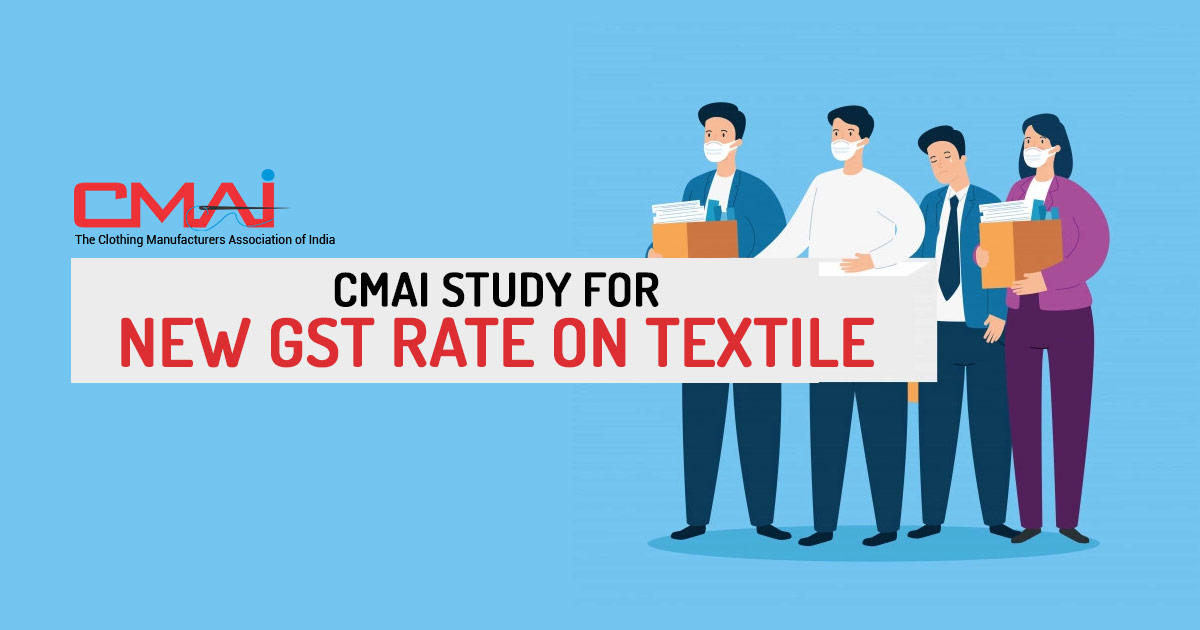
Clothing Manufacturers Association of India (CMAI), a textiles body, conducted a study and stated that the imposition of a standard GST of 12% on textiles proposed by the Center may increase prices of low-end garments by 6 percent will result in reducing demand, closure of 95,000 small units and 7-10 lakh job loss.
The same study also stated that implementation of a lower 5 percent standard GST could increase demand for clothing valued above ₹1,000 by about 0.5 per cent, reduce its cost by about 5 per cent and create about 40,000 additional jobs.
Adopting the middle route with the implementation of a standard GST of 7-8 percent on textiles, there will be a marginal drop in the quantity demanded by about 0.5 per cent, leading to no major shutdowns of the units and consequent negligible job losses. However, the current GST structure does not have an 8 per cent slab.
Sanjay Jain, a Delhi-based textile producer said that “The study has been submitted to the Ministry of Finance. The textile industry has proposed that status quo should be maintained at the current GST rates and once the new slabs come into effect, the industry may be shifted to 7-8 per cent slab.”
Inverted Duty Structure Under GST
In order to correct the existing inverted duty structure, the Central Board of Indirect Taxes and Customs (CBIC) has increased the GST rate for various types of garments, apparel, and footwear from the earlier 5 per cent to 12 percent (prices less than ₹1,000), which will be effective from January 1, 2022.
The GST rates for man-made fibers have been also reduced from 18 percent to 12 percent, while those on garments costing more than Rs 1,000 have been retained at 12 percent.
The move is aimed at uniforming the rates for the complete textile sector and scrabbing inverse duty distortions (where a higher tax will be levied on inputs compared to finished products). Textile bodies have said that this will suffocate small-scale manufacturers. Many textiles are already tussling with rising raw material prices.
A textile industry source who attended the meeting with the FM earlier this month said “The Finance Minister listened patiently to the grievances of the textile industry. But the final decision rests with the GST Council”
Former West Bengal Finance Minister Amit Mitra, in a recent press briefing, reportedly said that the need to fix the inverted duty structure put forward by the Center to justify the rate hike does not merit much as only 15 percent. The textile industry suffers from anomalies.
He also asked Prime Minister Narendra Modi through a tweet on Sunday to convene an urgent meeting of the GST Council to reverse the decision.
Influence on Tax Collection
The CMAI study also establishes that, if a uniform GST of 12 percent is implemented for the entire textile chain, the tax collection is likely to rise by Rs 7,000-8,000 crore. If 5 per cent is adopted, then tax collection can fall by about Rs 1,500 crore. In the case of 8% GST on Textiles, the tax collection can go up to ₹2000 crores.
According to CMAI, the said study was conducted by conducting interviews of several stakeholders including large players and MSMEs in the value chain from fiber to retail.